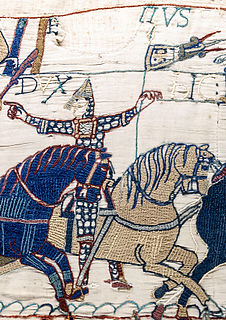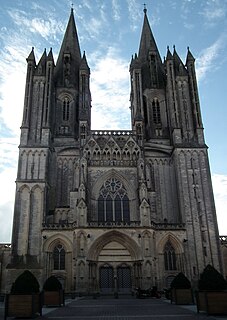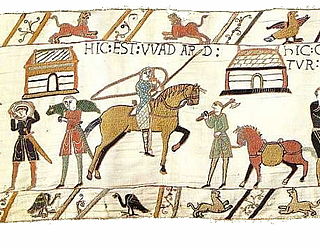 W
WWilliam the Conqueror had men of diverse standing and origins under his command at the Battle of Hastings in 1066. With these and other men he went on in the five succeeding years to conduct the Harrying of the North and complete the Norman conquest of England.
 W
WAimery IV viscount of Thouars was a companion of William the Conqueror on his Invasion of England in 1066.
 W
WEustace II,, also known as Eustace aux Gernons, was Count of Boulogne from 1049–1087. He fought on the Norman side at the Battle of Hastings, and afterwards received large grants of land forming an honour in England. He is one of the few proven companions of William the Conqueror. It has been suggested that Eustace was the patron of the Bayeux Tapestry.
 W
WTurstin fitz Rolf, also known as Turstin le Blanc and Turstin fitz Rou played a prominent role in the Norman conquest of England and is regarded as one of the few proven companions of William the Conqueror at the Battle of Hastings in 1066.
 W
WGeoffrey de Montbray, bishop of Coutances, also known as Geoffrey of Coutances, was a Norman nobleman, trusted adviser of William the Conqueror and a great secular prelate, warrior and administrator.
 W
WOdo of Bayeux, Earl of Kent and Bishop of Bayeux, was the maternal half-brother of William the Conqueror, and was, for a time, second in power after the King of England.
 W
WRobert, Count of Mortain, 2nd Earl of Cornwall was a Norman nobleman and the half-brother of King William the Conqueror. He was one of the very few proven companions of William the Conqueror at the Battle of Hastings and as recorded in the Domesday Book of 1086 was one of the greatest landholders in his half-brother's new Kingdom of England.
 W
WWadard was an 11th century Norman nobleman who is mentioned in Domesday Book, and is depicted in the Bayeux Tapestry.